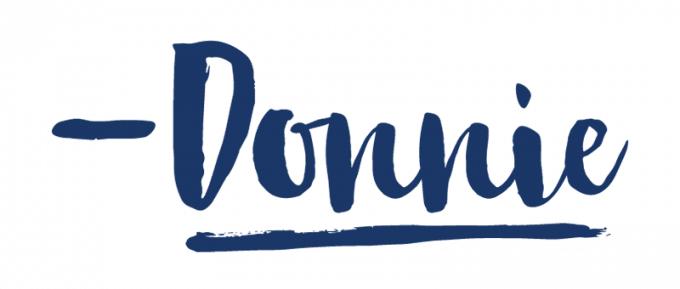Thoughts On Pay What You Want Pricing (PWYW) With Sales Numbers


I first learned about Pay What What You Want Pricing from Tom Morkes. He wrote an excellent book on the subject as well as a guest post on the Fizzle Blog. PWYW pricing is a strategy where you let the purchaser decide what to pay for a product or service. Instead of a fixed price, the price is flexible. This is the strategy Abby and I used when launching her eBook on June 10th.

Learn how to start a blog!
Get your new blog set up in a few short minutes with our easy-to-follow guide, and start growing your site today!
For those of you who have written a book or created a product to sell online, you know full well that one of the biggest challenges leading up to launch is deciding on a pricing strategy. It’s difficult to know how to value a particular product (in this case, an eBook). There are so many considerations that factor into pricing:
- Standard prices for similar products within the niche
- Format (you should charge more for a full video course vs. an eBook)
- Size of product (longer books and courses should cost more)
- Subject of product (a book that teaches someone how to make money should cost more)
- Audience demographic (business men will pay more than college students)
When we looked around Abby’s niche (Home decor/ DIY bloggers) we realized there was nothing else on the market like her book. We found some examples of eBooks on very specific monetization strategies within her niche but nothing as complete and comprehensive as Abby’s book. Not even close.
That being said, it’s still just one PDF file. There are no videos or audio files attached to the product. You can only charge so much for a PDF eBook.
I’ve also learned that if you teach someone how to make money, you can charge a lot more for that. Take, for example, Nathan Barry’s eBook Authority. It’s a fantastic eBook, but he charges $39 (worth every penny) for the PDF file. The reason he can do this is because he teaches you how to self publish your own books and make money along the way. The knowledge and profits gained from implementing his strategies make $39 seem like nothing.
In fact, before launching, Abby had several of her friends recommend a similar price of $39. We knew that was too much. You have to take into consideration your audience. The audience for Abby’s eBook is primarily new bloggers looking to take their blog to the next level and earn some money. This is very different from an established business looking to educate their employees. The price points for these two demographics look very different.
Even though $39 would be well worth it for Abby’s book if the reader implemented what Abby taught, it’s doubtful this particular demographic would open their wallets for a $39 book. A number in the $20 to $25 range seemed more reasonable.
A few months before the sale of Abby’s eBook we talked about PWYW pricing and we both agreed it was a great idea. But to be honest, we wavered on that decision up until the weekend before launch. We were scared (more on that later) that everyone would pay $1 for her book and we wouldn’t make any money after all that hard work.
The Saturday before launch day Abby and I talked about two scenarios:
- Fixed price of $17
- PWYW pricing with a recommended $24 and $1 minimum
We went with #2 and we are happy we did! Lets look at at the results for the Month of June. This isn’t a complete month because the book launched on June 10th.

1. It’s amazing how consistent the conversion rate has been. This isn’t the conversion rate from Abby’s product page but rather the conversion rate from when someone clicks “buy now” and is presented with the Gumroad product page.This table shows sales data for the first 21 days the product was available for sale. There are a few things that are worth noting:
Overall for the 21 days the eBook was available in June, Abby’s landing page had 4,225 unique visitors. Of those, 1,191 clicked “buy now” and 496 actually pulled out their credit/debit card and made a purchase. The overall conversion rate for Abby’s landing page was 11.73%. It will be interesting to keep tracking that number as the weeks and months roll on.
2. The average sales price has been consistently around $10 with slight increases each week. I just pulled up data for the first week of July and sure enough, the average sales price is now just over $11. I don’t understand why the average sales price is lowest on launch day and slowly keeps climbing.
3. Launch day is important. Abby did a great job building buzz surrounding the launch. You can read an entire post I wrote on the Anatomy of an eBook Launch. To be honest, I thought sales after the first couple days would grind to a halt. This hasn’t been the case. Obviously the first day was our largest sales day and will never be surpassed for this product but week 2 and 3 of sales have been nice and steady. The eBook continues to sell multiple copies each day.

Now that you’ve seen our results, let’s take a look at what makes a successful PWYW product launch.
5 Keys to Pay What You Want Pricing
1. Make Sure Your Audience Feels Like They Know You
PWYW pricing depends in part on your audience’s connection with you. If some large corporate brand made something available with PWYW pricing, I’m sure 99% of people would pay the absolute minimum.
On the other hand, many of Abby’s readers feel like they know her. She isn’t a corporation. She’s a person and many of her readers feel connected to her. This is absolutely essential to PWYW pricing. I’m guessing that some of her readers would just feel guilty only paying $1 for her book. They shouldn’t, but they would!
2. Low Target Price
This pricing model will only work with lower priced items. This isn’t something I’ve been able to test out, but I don’t think the PWYW model would work with items with a recommended price of more than $50. The difference between $1 and $50 is significant and it’s a big jump for someone to pay $50 when they know they could have the product for $1. With Abby’s recommended price of $24 it’s not a drastic amount of money over $1.
3. Positioning and Price Anchoring is Key
If you take a look at Abby’s sales page, you can clearly see that she prices her eBook at $24. That is the price. But then she goes a step further and states that she set up the system to allow for any price over $1. We used $24 to anchor the perceived value of the product in the minds of her customers. If we would’ve just stated the price as anything over $1 without mentioning $24, her audience wouldn’t know how they should value the product. The perceived value would be lower and the average purchase price would also be lower.
4. All or Nothing. Set the Floor at $1
Abby and I had an interesting discussion on where we should set the floor for the PWYW pricing of her eBook. After attempting to think through the psychology of PWYW I concluded that setting a floor at anything more than $1 did not make sense. For example, if we positioned the price of the product at $24 but had a floor of $5 that would in essence be telling potential purchasers that we are really ok with $5.
Setting the floor at the absolute minimum of $1 tells potential purchasers that the product is priced at $24 but under extenuating circumstances you can have the book for whatever you want. A price floor at anything but $1 doesn’t make sense. If it’s higher, I would guess that you’ll receive the vast amount of purchases right at the floor. This was not the case with setting the floor at $1.
5. Force People to Pull Out Their Credit Card
With Gumroad we had the option of using PWYW pricing with no minimum price. If we went that route people could download the book for free without ever pulling out their credit card. We decided against this option.
There is a psychological barrier of actually pulling out a credit or debit card to make a purchase online. By making people pay at least $1 we overcame that barrier. I’m sure some people thought, “wow it’s only $1, that’s an amazing deal.” And then when they actually pull out their credit card they decide, “you know what, I should pay at least $10 for this.” If we had set the price floor at $0, we would’ve lost a lot of potential revenue. It’s just too easy to download something for free. We wanted people to at least pay something.
I’ve talked a lot about how to not screw up PWYW pricing, but I need to spend some time and mention all the amazing benefits of using this strategy!
Increased Sales Numbers
There’s no data I can present here since Abby’s book has only been available with a PWYW strategy, but it’s safe to say that you will sell more copies using Pay What You Want. How could you not? People read the sales page, see the price, and then get excited when they realize they could have this thing for any price they want!
While the average price paid with our PWYW strategy is certainly lower than a fixed $24 product, I am quite confident that not only the volume of sales is better with PWYW but also the sales revenue is better. At some point in the future once sales have leveled off I may test this theory and keep the price fixed for an entire week.
Increased Reach
Along the same lines as the increased number of sales with PWYW pricing, this strategy also increases online reach. We’ve already surpassed 500 sales. If these people read the book that is 500 people who will feel like they know Abby.
The book is filled with personal stories and lessons, and the increased number of sales with PWYW pricing will increase Abby’s reach and influence in her niche. There are more benefits to selling a product online than just the bottom line numbers. Your reach and authority on the particular subject also increases.
Viewed as Generous
Abby received countless emails and comments from people thanking her for the PWYW pricing. Some mentioned that they paid $1 and that they otherwise couldn’t afford the book. They were incredibly grateful and I’m sure now a raving fan of Abby.
Others in her community paid full price but also sent her a thank you email telling her how awesome it was that she was willing to sell her book for $1. Abby came across as incredibly generous (which she is!).
Helps Others
This was an important one for Abby. There are many in her audience that want to start a blog but just have no idea where to start. They may have limited means, meaning every purchase is an important one. For these people, they could pay $1 and not worry about it. They would then be armed with all the information they needed to get a blog up and running and potentially change the financial outlook for their family.
Some Concerns…
I can totally relate to the person who is nervous about implementing a PWYW strategy. It is so much work to write an eBook or put together a product to sell online– months and months of work. It’s frightening to then potentially give it away to the whole world for $1.
If you’ve read through this post and looked at our numbers, you can see that this doesn’t have to be a concern. You can also track the average price paid and if things aren’t going as planned, it’s not hard to change course after a few hours or a few days of sales. Gumroad makes this simple.
Conclusion
We are completely thrilled with the results of using the PWYW pricing strategy to sell Abby’s eBook! It may have been a risk initially, but the number of units sold and the rapport we were able to build with readers truly made this launch a success for us. I don’t know that we will use PWYW for every product we sell, but based on our first experience with it, we would definitely be open to employing this strategy again in the future.
If you’ve used a PWYW pricing strategy we would love to know your results. Also, if you purchased Abby’s eBook make sure you let us know what your overall impressions were of the PWYW buying experience.
Want to read over 4,000 words on our exact eBook launch strategy? You can right here: Anatomy of an eBook Launch

We’re sharing ALL of the tools we’ve used to grow our blog!
Stop the guessing game! Get our list of 100+ proven tips, tools, and resources that can take your blog/online business to the next level!


Thank you so much for the information on Gumroad. I’ve seen the PWYW concept at a thrift store, and I can’t wait to implement it with digital products.
So glad it was helpful for you, Brandee!
~Abby =)
Thank you for your answer to my question in yesterday’s webinar. I’ll probably use this method for my first launch on the 15th of June. Oops, now it’s in print and I can’t back down anymore 😉
Yes! You go, girl! 🙂
~Abby =)